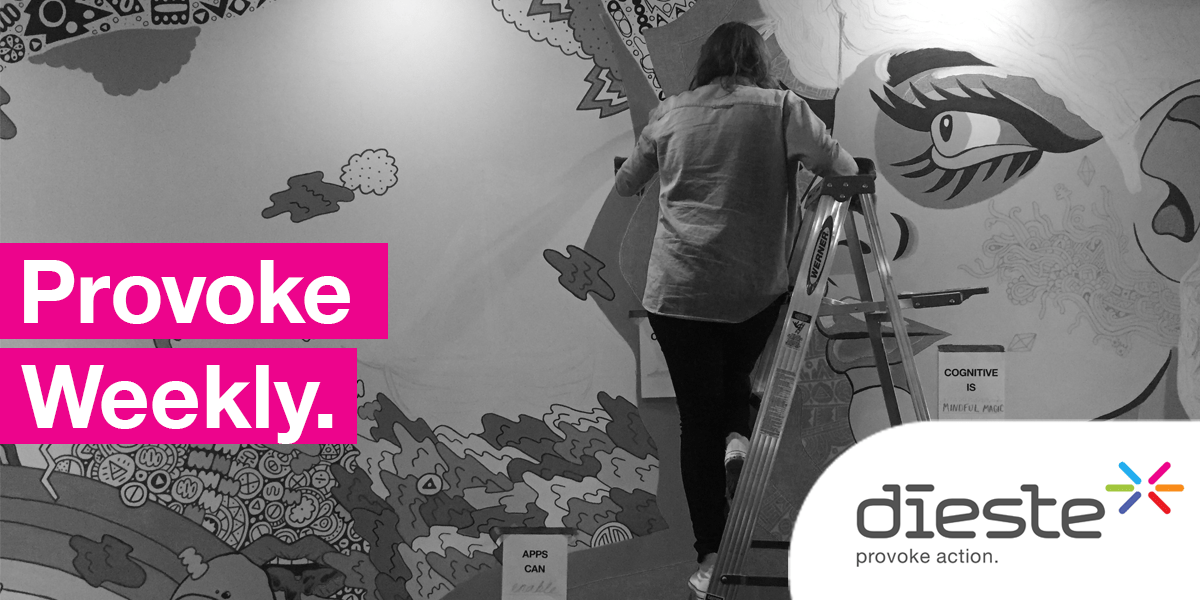Last month I “met” Watson for a cocktail at IBM’s Cognitive Studio during SXSW Interactive. Although what I should really say is that I let Watson “meet” me, but I’ll get into that later. The entire experience took less than an hour, but I left with an entirely new perspective on the implications of cognitive analysis of data; and how we can begin to “think” more like Watson when solving our marketing challenges.
1.) It’s Not Essential To Ask People Who They Are
Upon arrival, an IBM representative presented me with an iPad displaying a series of questions meant to inform Watson of my preferences in taste. Did I like bourbon over  vodka, or spicy versus sour? None of the questions had anything to do with my gender, age, ethnicity, annual salary or marital status. I chose the word “classic” from a selection of other ambiguous categorical words. It reminded me how simple we are when meeting someone, like how we ask someone about their favorite color or what city in the world they would like to live in. Rather than demographically profiling me (a married, male, millennial, bilingual Hispanic advertising professional), Watson created an impression of me based upon a glimpse of attitudinal and behavioral data points.
vodka, or spicy versus sour? None of the questions had anything to do with my gender, age, ethnicity, annual salary or marital status. I chose the word “classic” from a selection of other ambiguous categorical words. It reminded me how simple we are when meeting someone, like how we ask someone about their favorite color or what city in the world they would like to live in. Rather than demographically profiling me (a married, male, millennial, bilingual Hispanic advertising professional), Watson created an impression of me based upon a glimpse of attitudinal and behavioral data points.
Upon answering all questions, the representative encoded the resulting fragment of my persona into my NFC bracelet. I was literally condensed into an encoded sensor that would help Watson recognize me when I came near. And yet, that spoke more of me, and was more useful to Watson, than answering questions about who I was or where I came from.
2.) Approximations Can Be More Powerful Than Hitting The Bull’s-eye
At the bar, I scanned my NFC bracelet so Watson could recognize me. The only thing the bartender asked me was: “Sweet or Not Sweet”. He then created a cocktail based on what Watson thought I would like. I can honestly say that Watson didn’t nail it, but why would I expect that? The fact that it was close enough to include some of my preferences, but also had the ingenuity to include ingredients that I would never have put in a drink made it an equally empathetic moment. By the time I was finished with the drink, I was confused whether I had liked it because I wanted Watson to be right or because it was close enough that it didn’t matter if it was.
In marketing we are so consumed about getting it exactly right with consumers that it would be as if Watson had simply asked me what I wanted to drink and what ingredients to put in it. Part of our responsibility is to imagine and propose things that consumers don’t yet know they want or would like. If our approximations are close enough, people will meet us the rest of the way.
3.) Focus Groups Can Lead To Great Ideas, If Executed Correctly
Part of the experience was to engage in more analog experiences of cognitive analysis. One such experience was to answer seemingly unrelated questions about people’s thoughts, experiences and dreams on a piece of paper. These answers were then used by two muralists as the inputs that dictated the subject matter of little elements of their masterpiece. The result was a wall-sized, hand-painted piece of art. From a big picture perspective, it seemed to come from a single vision, but was truly built upon the collective mindset of hundreds of responses.
To be very literal, the masterpiece came directly from a focus group. However, the questions were not “what would you love on a painting” and the muralists did not show potential paintings to people for pre-approval.
We must look to focus groups as an opportunity to get a pulse for people’s current mindset, not whether or not they would approve our concept or idea. And we must evolve from high engagement small samples to cognitive engagement larger samples. The more responses we can garner, with questions that truly elicit genuine human responses, the closer we will get to acquiring better and more actionable insights from focus groups.
How To Think Like Watson
Ironically, Watson was meant to be more like us and less like a computer. To respond to information cognitively, rather than logically. It’s what informs how we treat a person we just met.
As our human reality pushes us to the frontier of the bionic man, platforms like Watson remind us that there is still a place for humans to do their human thing. The exponential growth of data made us react with computer systems, because of the assumption that they are better at logic than we are. And that is true.
But it’s the illogical ingenuity of human nature that led us to our most amazing ideas and discoveries. So, let’s stop asking who our audience is; let’s stop trying to give them exactly what they want; and let’s stop pretending that a handful of approvals will yield a successful campaign. Like Watson, let’s inquire about what makes them who they are; let’s surprise them with solutions that re-invent their preferences; and let’s evolve the focus group process to a more fruitful source of consumer pulse.
At Dieste Inc. we put as much effort on the questions as on the answers to provide our clients with a multicultural solution based on real opportunities. Be sure to subscribe to Provoke Weekly to stay tuned.
Franco Caballero, Creative Strategist










